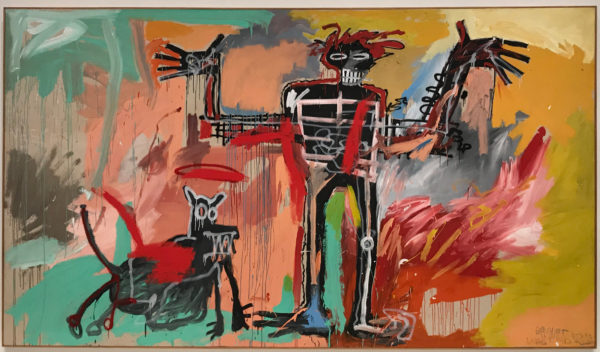
The art of Jean-Michel Basquiat
Is it a coincidence that the words Zen and Zone are so similar? There must be a reason that when human beings do what we love at our highest level of proficiency, we are also at peace and experience fulfillment.
There is clear evidence that our thoughts often get in the way of our flow.
I learned in typing class that once I trusted that my fingers knew where the letters were, I could stop thinking and type much faster. Musicians learn their instrument so that music can flow without specific thought of each note or strum. Athletes train so they can perform without thinking and their skill increases.

Getting into the zone can help manage your relationship with work.
A very simple example of “being in the zone” happens when we are driving a familiar route and get to our destination and realize that we didn’t think about the last segment of our drive – in fact it was as if we were on auto-pilot.
The science of flow is big business because it can produce results far beyond those expected.
In these states of flow or “being in the zone” we tend to have peace of mind, even when doing or creating something very technical or profound. Neuroscience shows us that when we are creating and have relaxed into the zone, we are also at our most efficient, peaceful, yet active, brain state.
I was privileged to view an exhibit of Jean-Michel Basquiat’s art this past week. What struck me most was that in order to produce the volume and type of art that he produced in his eight-year career, he had to be “in the zone.” The sheer number of paintings he created (over 1,500 before his death at age 27), each at rapid speed and seemingly with abandon, belie minimal effort. The lines and brush strokes of his art appear to be created so freely that it seems as if he must not have been thinking about what he was painting, but simply letting it flow.
The juxtaposition of this apparent flow and outcome compared to my own experience when I paint made me think: 1) this is where talent differentiates the great artists (LOL), but also; 2) If I weren’t trying to copy something else, or thinking my art needed to look a certain way, be proportional, or make sense…then maybe I could let it flow and my own version of art would emerge.
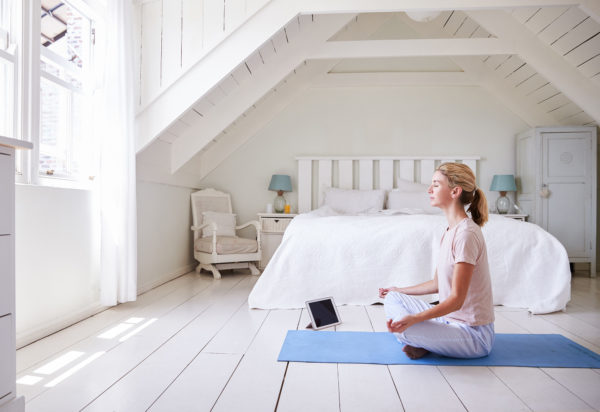
Daily meditation shifts the brain to a happy state and helps to keep you in the zone.
The closest I’ve come to experiencing this has been a phase where I did “dot” painting by transferring paint using the end of a chopstick and made repeating patterns on a canvas. Once there was the first line of dots on the canvas, I could detach my mind and just repeat the pattern with dots of color. This felt like meditation – my mind felt calm, I was just watching the pattern emerge, and time passed without my awareness.
In our day-to-day lives, we often think we have to “work hard” to succeed, but perhaps the possibility of getting “into the zone” offers a way to change our relationship with our work. Could we train ourselves to stay in a pattern of calmness that allows us to get into the zone creatively each day and keeps us in a healthy brain state?
Cognitive behavioral therapy teaches anxiety management by focusing on the symptoms experienced with anxiety. Do you feel your heart race? Do you feel your skin flush? Do you feel your palms get sweaty? Do you feel pressure in your head? Whatever physical symptoms are present for the individual are then recreated for a set time daily that is unassociated with any anxiety, until the brain learns that these symptoms are not cause for anxiety.
Meditation flips this concept around so that we repeat the physical practice of being calm, focusing on our breath, hearing ambient sound, detaching from our thoughts or watching them “float by like clouds.” By practicing this state, we can create brain shift similar to muscle memory so that we can stay in this zone throughout our day – even when challenged with the unexpected. The surprise is an ease and flow that is more productive than we think possible – without effort.
I’ve often brushed off the saying, “Do what you love and you’ll never work a day in your life.” But maybe it’s also about staying in a brain state that you love. It’s about getting into the zone so that your own thinking doesn’t get in the way of staying in your happy place.
In this state, the external work is not what drives the experience, but rather the internal brain state as it creates a zone of peace and calm that allows your work to flow…I’m giving it a try!
Dr. Brossfield practices functional medicine for men and women at her practice, XO Health, in Rancho Mirage and can be reached at (760) 573.2761.


















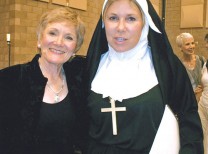



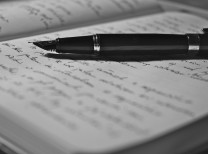
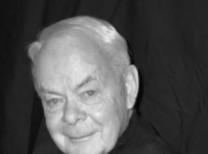



























Comments (0)